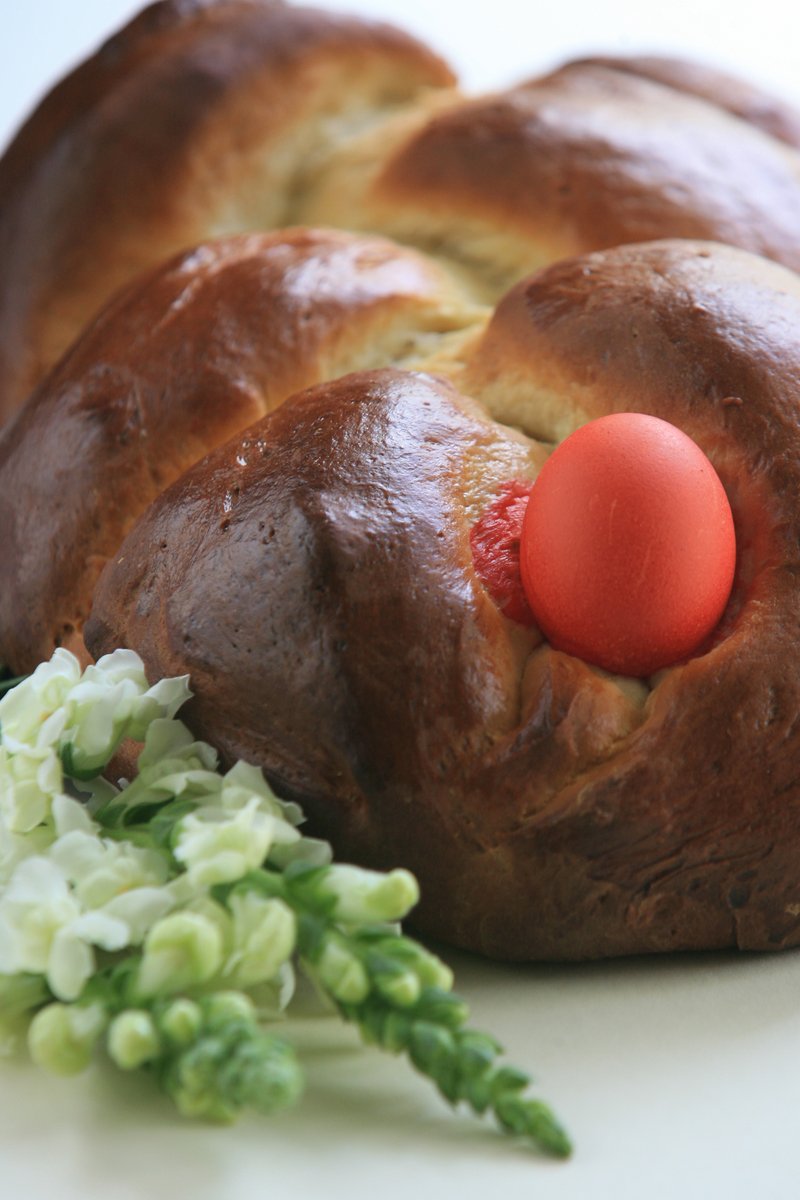I did not grow up eating any specific Easter foods, beyond dyed eggs and whatever goodies my mother put in our Easter baskets. Our Easter feasts usually consisted of the same foods as any other family celebration — ham or turkey, my Granny Tommie's green beans, fried potatoes, assorted salads and a table laden with desserts.
But I've always enjoyed learning about — and eating — the traditional foods of other families and cultures.
Tsoureki is also known as Lambropsomo, which translates roughly into bread of light or epiphany bread. It is decorated with a red egg which symbolizes Christ and springtime.
The bread is traditionally baked on Good Friday and eaten during the Resurrection Meal, which signifies the end of Lenten fasting.
This rich, briochelike bread is slightly sweet and citrusy.
Leftovers — if you're lucky enough to have any — make excellent French toast or bread pudding.
Greek Easter Bread
(Tsoureki)
1 ¼ cups lukewarm milk
1 tablespoon active dry yeast
7 ⅓ cups bread flour, divided use
¾ cup granulated sugar, divided use
Pinch salt
Finely grated zest of ½ orange
Finely grated zest of ½ lemon
¼ cup unsalted butter PLUS more for greasing pan
3 eggs, well beaten
2 teaspoons vanilla extract
1 whole fresh egg, dyed red, optional (see note)
1 egg yolk, beaten WITH 3 tablespoons milk
In a large bowl, add yeast to milk and stir until yeast is dissolved. Stir in 1 ¾ cups of the flour and 2 tablespoons of the sugar. Cover with plastic wrap and let rest in a warm place about 1 hour, or until mixture is frothy.
In a separate large bowl, sift together remaining flour, remaining sugar and the salt. Stir in orange and lemon zests and cut in butter, using a pastry blender or two knives, until mixture resembles very fine bread crumbs. Make a well in center and pour milk-yeast mixture, beaten eggs and vanilla extract into well. Stir until a dough forms.
Turn mixture out onto a lightly floured surface and knead 10 to 15 minutes, or until dough is very soft and elastic. Place dough in a clean bowl, cover with plastic wrap and let rise until double in bulk, 1 to 2 hours.
Turn dough out on a lightly floured surface and knead back to original size. Divide dough into 3 equal portions and roll each portion into a 12-inch sausage shape. Lay 3 lengths of dough side by side and pinch together at one end.
Braid strips of dough, pinching together at other end when braid is complete. Press dyed egg into dough and place loaf on a lightly oiled cookie sheet. Cover with plastic wrap and let rise until double in bulk, 45 minutes to 1 hour.
Heat oven to 375 degrees. Brush loaf with egg wash (do not brush dyed egg), and bake 40 to 45 minutes, or until golden brown and loaf sounds hollow when tapped. Transfer to a wire rack to cool.
Makes 1 very large loaf.
Note: The dyed red egg, a Greek tradition, is not cooked before placing in the bread. It is for decoration only and is not eaten.
Recipe adapted from Greek Meze Cooking by Sarah Maxwell
Food on 04/17/2019
